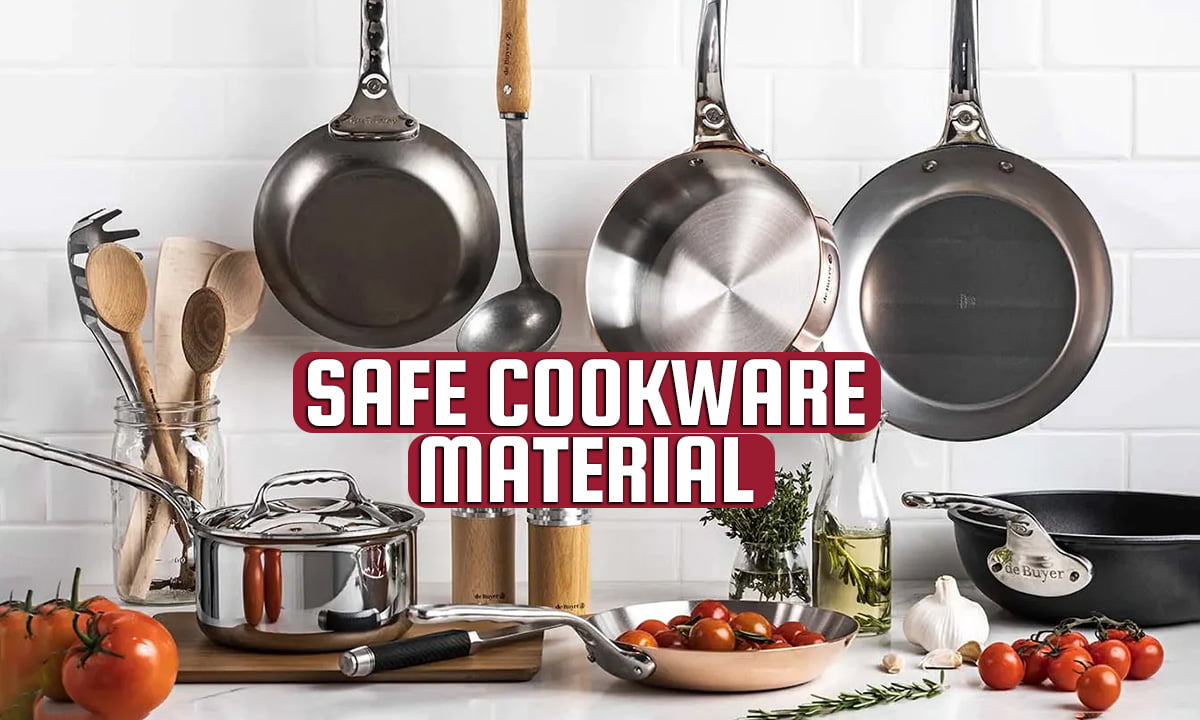1. Introduction
Cookware is not just about cooking food; it is also about safeguarding our health. Imagine preparing a delightful meal only to unknowingly introduce harmful substances through the pots and pans used. In this guide we will learn what is the best cookware material and understand the importance of safe cookware, offering insights into different materials to help you make informed decisions about what you cook with.
Table of Contents
2. Understanding Safe Cookware Materials
A. What Constitutes Safe Cookware?
Cookware materials play a pivotal role in preserving nutrients and preventing harmful substances from leaching into our food. It’s essential to understand:
Impact of Cookware Material on Health and Nutrition
The material your cookware is made from can affect the nutritional value of your meals. Certain materials, like clay or ceramic, are known to retain nutrients, while others might introduce toxins or react with acidic foods.
Historical Use of Traditional Materials
Traditional materials like clay, copper, silver, and others have been used for centuries. These materials not only contributed to taste but also preserved the nutritional value of food. Exploring their historical use provides valuable insights into safe cooking practices.
3. Common Cookware Materials
a. Stainless Steel Cookware
✅ Pros:
- Durability: Stainless steel is long-lasting and resistant to rust, corrosion, and scratches.
- Versatility: Suitable for various cooking methods and can withstand high temperatures.
- Ease of Maintenance: Easy to clean and dishwasher-safe.
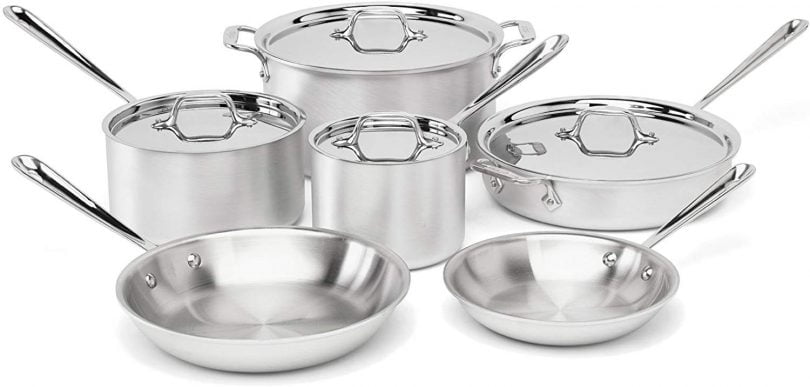
❌ Cons:
- Non-Stick Properties: Lacks non-stick properties, making food prone to sticking without proper seasoning or techniques.
- Nickel Leaching: May leach small amounts of nickel into food, although generally considered safe unless allergic.
- Best Uses and Care Tips:
- Preheat the pan before adding oil or food to prevent sticking.
- Use gentle scrubbers or non-abrasive cleaners to maintain the surface.
- Avoid using stainless steel for cooking highly acidic foods for prolonged periods.
b. Cast Iron Cookware
✅ Pros:
- Exceptional Durability: Cast iron is rugged and can last for generations when properly cared for.
- Enhanced Flavor: Develops a natural non-stick surface through seasoning, adding flavor to food.
- Versatility: Suitable for various cooking methods and oven-safe.
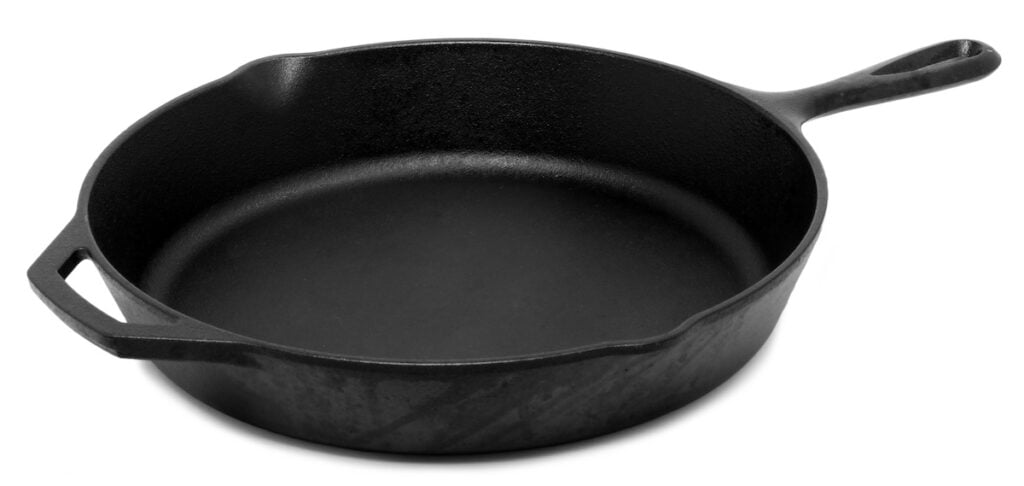
❌ Cons:
- Seasoning Maintenance: Requires seasoning with oil to maintain the non-stick surface.
- Reactivity: Reacts with acidic foods, potentially affecting taste and causing leaching of iron into food.
- Seasoning Process and Maintenance: Season the cast iron by coating it with a thin layer of oil and heating it in the oven. After use, clean gently with mild soap, dry completely, and apply a thin layer of oil to prevent rusting.
c. Solid Ceramic Cookware
✅ Pros :
- Chemical-Free Surface: Pure ceramic cookware does not contain chemical coatings.
- Versatility: Safe for use on various stovetops and ovens.
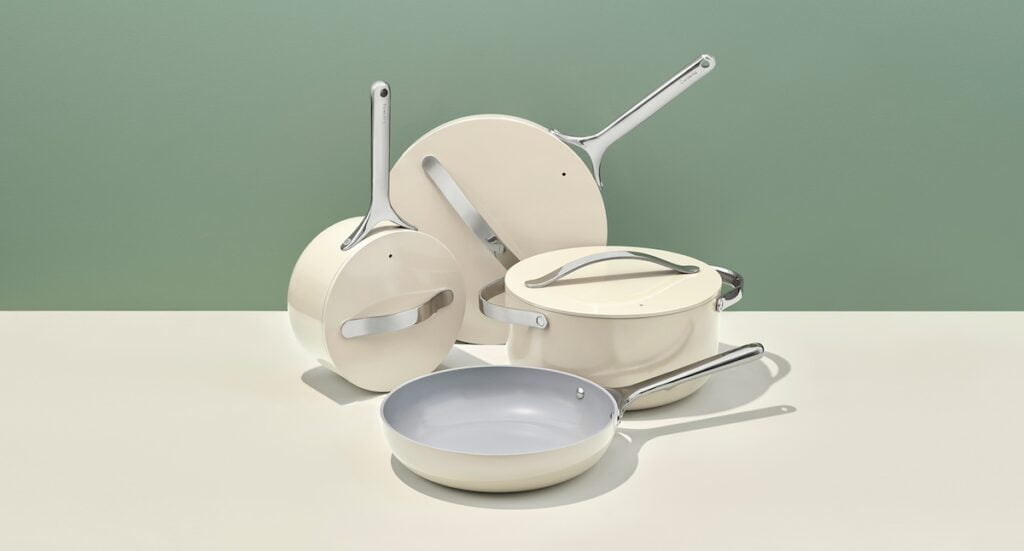
❌ Cons:
- Costly: Solid ceramic cookware tends to be expensive.
- Slow Heating: Takes longer to heat up compared to other materials.
- Differences Between Pure Ceramic and Ceramic-Coated: Pure ceramic is made entirely from kiln-baked clay, while ceramic-coated cookware has a ceramic coating applied over a different material base.
d. Ceramic-Coated Cookware
✅ Pros:
- Non-Toxic Non-Stick Surface: Offers a Teflon-like non-stick surface without harmful chemicals.
- Efficient Heating: Provides even heating for cooking.
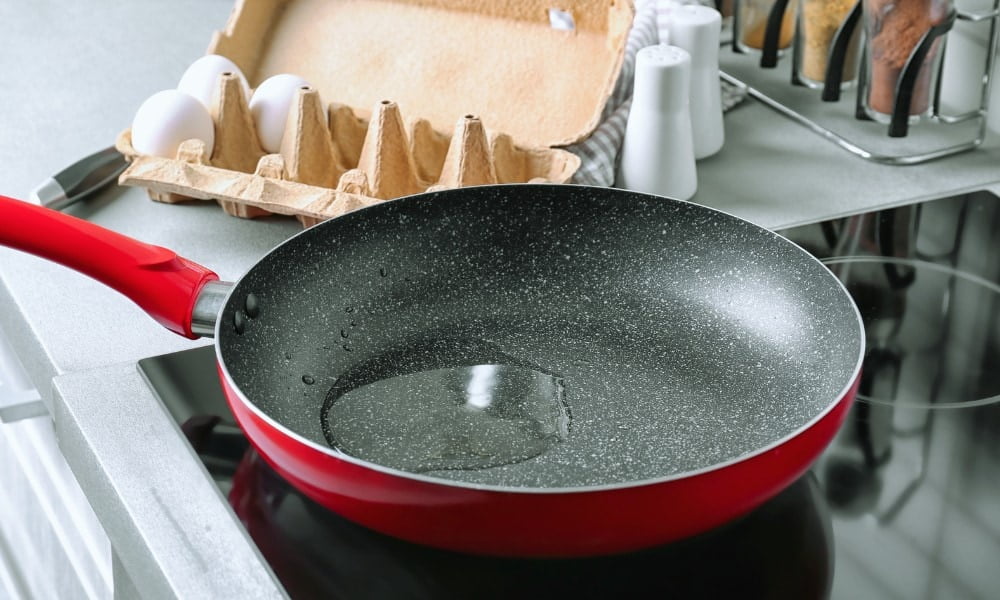
❌ Cons:
- Coating Durability: The ceramic coating can wear off over time, reducing non-stick properties.
- Not Suitable for High Heat: May not be suitable for high-temperature cooking.
- Durability and Precautions: Use wooden or silicone utensils to prevent scratching the ceramic coating. Avoid using high heat settings to prolong the coating’s lifespan.
e. Porcelain Enamel Cookware
✅ Pros:
- Non-Reactive Surface: Porcelain enamel does not react with acidic foods.
- Ease of Cleaning: Dishwasher-safe and resistant to rust.
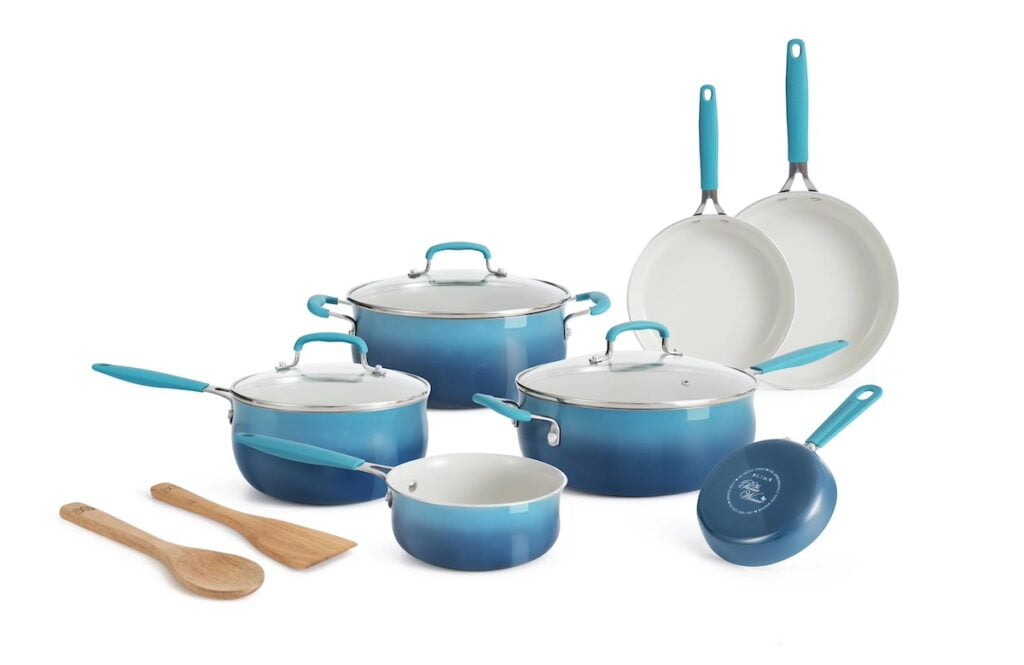
❌ Cons:
- Chipping Risk: Enamel can chip if mishandled or subjected to impact.
- Slow Heating and Cooling: Takes time to heat up and cool down.
- Safety Features and Maintenance: Choose brands with lead-free enamel to ensure safety.
- Handle with care to prevent chipping of the enamel coating.
f. Glass Cookware
Glass cookware presents a unique blend of advantages and limitations, making it a popular choice for certain cooking needs.
✅ Pros:
- Non-Toxic and Non-Reactive: Glass is inert and won’t interact with food, ensuring that no harmful substances leach into your meals.
- Versatility: Suitable for baking, cooking, serving, and storing food, making it a convenient option.
- Transparency: Allows you to monitor food while it cooks, aiding in precise cooking and checking food doneness.
- Easy to Clean: Dishwasher-safe and resistant to staining, making cleanup hassle-free.
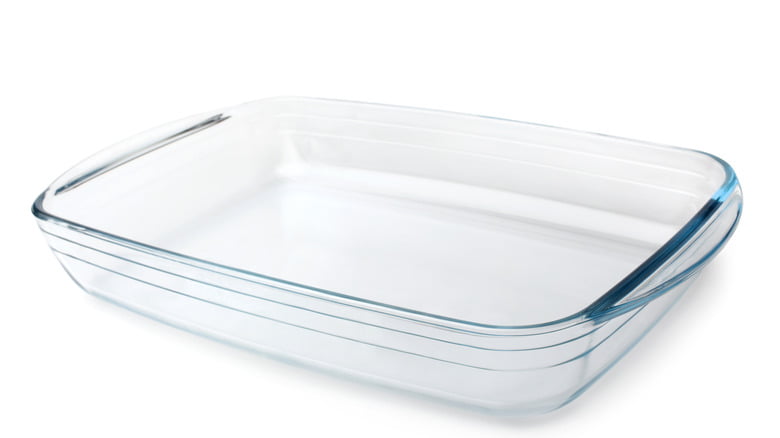
❌ Cons:
- Fragility: Glass is prone to breaking if mishandled or subjected to sudden temperature changes, requiring careful handling.
- Limited Heat Conductivity: Slower to heat up and cool down compared to metal cookware.
- Types of Glass and Safety Considerations: Different types of glassware exist, including soda-lime glass and borosilicate glass. Borosilicate glass is known for its higher resistance to thermal shock, making it a safer choice for stovetop cooking.
- When selecting glass cookware, ensure it’s labelled as suitable for stovetop use if you plan to use it directly on the stove. Always check manufacturer instructions to understand temperature limitations and usage guidelines.
g. Titanium Cookware
Titanium cookware, often combined with other materials, offers unique benefits that cater to specific cooking preferences.
✅ Pros:
- Durability: Titanium-based cookware is incredibly durable, resistant to scratches, and maintains its appearance over time.
- Lightweight: Despite its durability, titanium is surprisingly lightweight, making it easy to handle.
- Non-Reactive Surface: Titanium is non-toxic and won’t impart any metallic taste to your food.
- Longevity: Offers a longer lifespan compared to some other non-stick coatings.
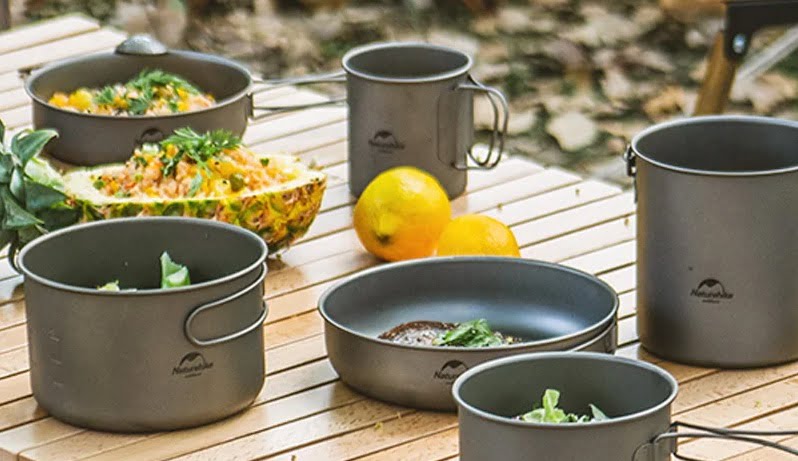
❌ Cons:
- Price: Titanium cookware tends to be more expensive due to its durability and performance.
- Potential Coating Issues: Some titanium cookware might feature additional coatings or layers that can wear off over time, affecting non-stick properties.
- Differences in Titanium-Based Cookware: Titanium-based cookware often includes titanium-infused ceramic blends or titanium-reinforced coatings. These variations may impact durability, non-stick properties, and overall performance.
h. Carbon Steel Cookware
Carbon steel cookware shares similarities with cast iron but boasts a few distinct advantages.
✅ Pros:
- Durability: Highly durable and capable of withstanding high temperatures, making it suitable for various cooking methods.
- Naturally Non-Stick: Develops a natural non-stick surface over time with proper seasoning and use.
- Lighter than Cast Iron: Easier to handle due to its lighter weight while offering similar benefits to cast iron.
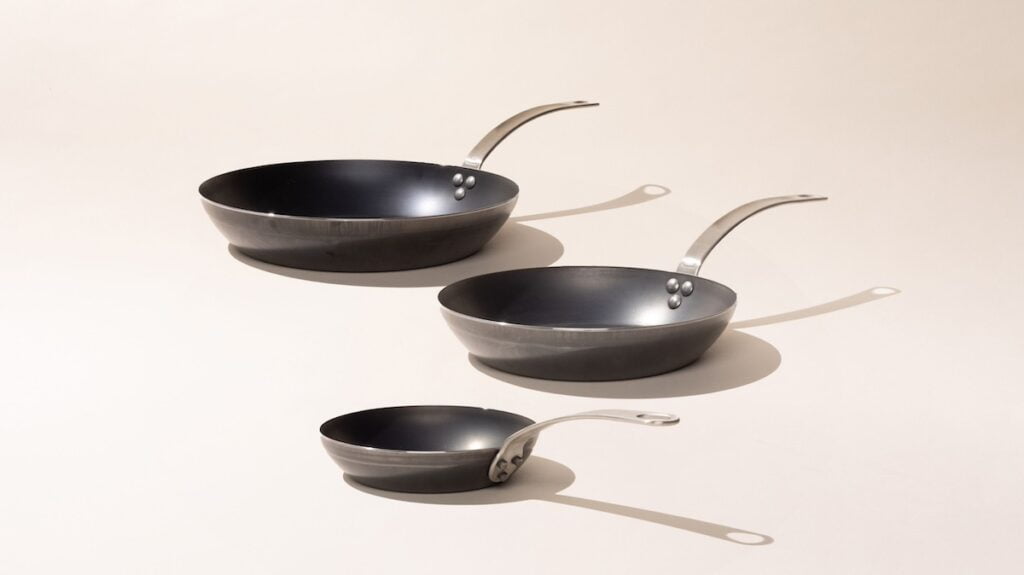
❌ Cons:
- Reactivity with Acidic Foods: Similar to cast iron, carbon steel may react with acidic ingredients, potentially altering taste.Requires Seasoning: Needs regular seasoning to maintain its non-stick surface and prevent rusting.
- Advantages Over Cast Iron: While both materials have comparable features, carbon steel’s lighter weight makes it more manageable for everyday use in the kitchen. Its quicker heating properties also appeal to many cooks.
i. Clay Cookware
Clay cookware offers a natural and traditional way of cooking that comes with its own set of benefits and considerations.
✅ Pros:
- Health Benefits: Cooking in clay pots helps retain the natural flavors and nutrients of food without adding any toxins or chemicals.
- Heat Retention: Clay’s porous nature allows for gentle heat circulation, keeping food moist and flavorful.
- Versatility: Suitable for slow cooking, roasting, and even baking, adding depth to culinary preparations.
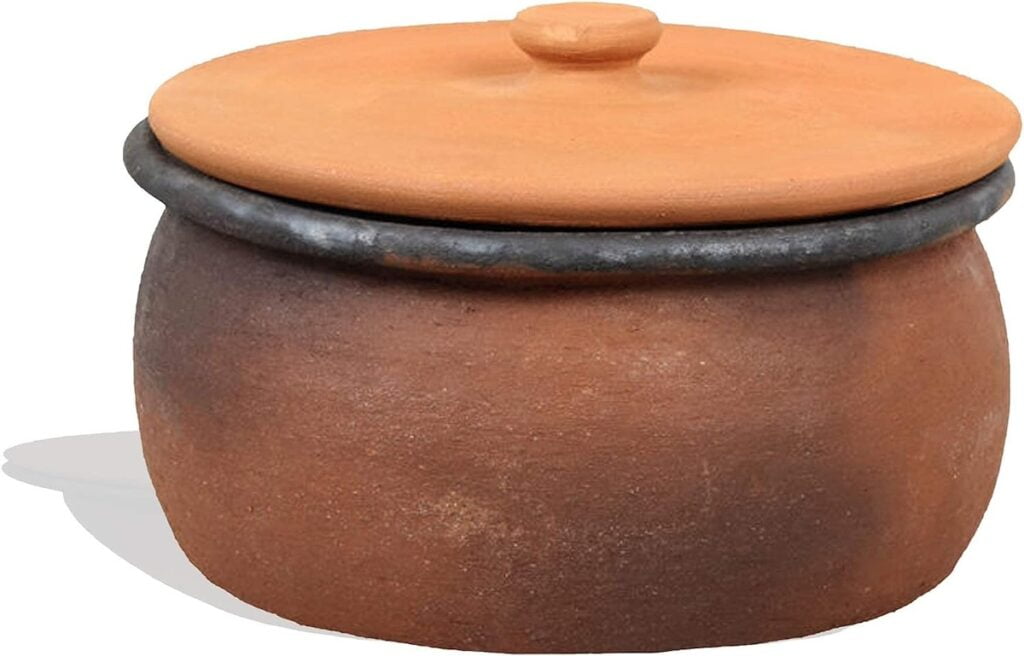
❌ Cons:
- Fragile: Clay pots are delicate and prone to breakage if handled roughly, requiring careful storage and handling.
- Slow to Heat Up: Takes longer to reach desired cooking temperatures compared to metal cookware.
- Health Benefits and Cooking Advantages: Clay’s alkaline nature neutralizes acidity in food, offering a natural detoxifying effect. Additionally, food cooked in clay pots tends to have a unique taste and aroma due to the porous nature of the material.
In summary, each cookware material offers its own set of advantages and limitations, catering to different cooking preferences and needs. Choosing the right cookware involves considering factors such as safety, cooking style, durability, and personal preferences to create a wholesome and enjoyable cooking experience.
4. Exploring Traditional and Uncommon Materials
When it comes to cookware, the traditional use of materials like copper, silver, brass, and even gold holds historical significance and offers unique advantages. These materials have been utilized for centuries and are deeply rooted in cultural practices.
a. Copper Cookware:
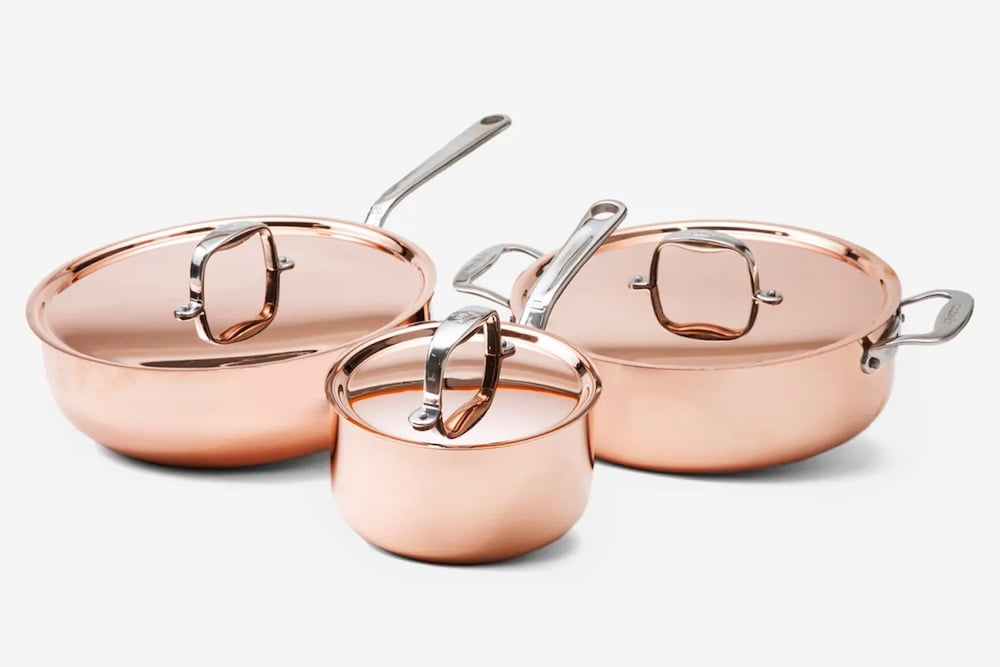
Copper utensils, often lined with tin or nickel, have antibacterial properties and are recognized for their health benefits. Copper is an essential micronutrient, beneficial in fortifying drinking water and aiding in increased immunity and overall well-being. However, acidic foods can react with copper, potentially altering taste, so it’s advised to exercise caution while cooking acidic dishes in copper utensils.
b. Silverware:
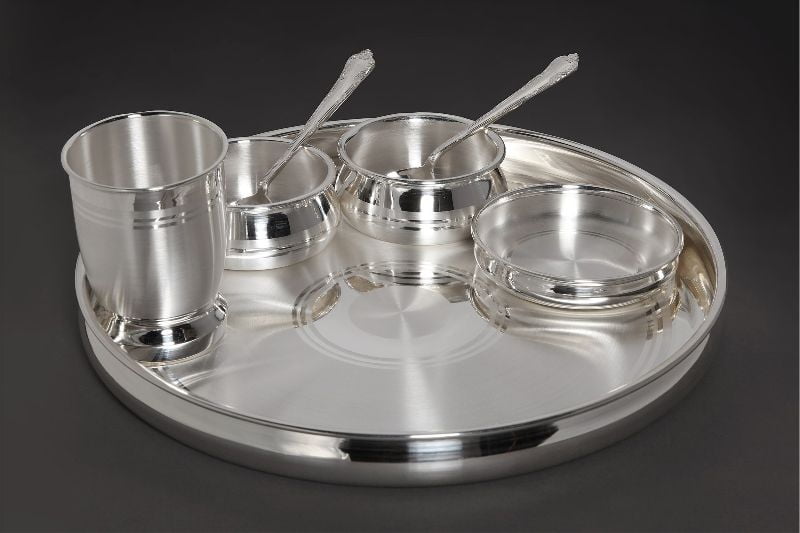
Silver, commonly used in cutlery and utensils, has antibacterial properties that safeguard food from harmful bacteria. It’s believed to boost immunity and retain food freshness due to its antimicrobial characteristics. Eating from silverware may have a cooling effect on the body, aiding in digestion and enhancing the metabolic system.
c. Brass and Gold:
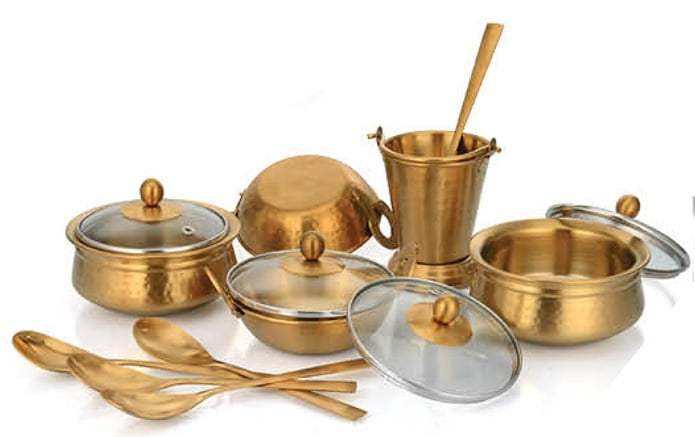
Brass, consisting of copper and zinc, is thought to have health benefits such as boosting immunity and combating Vata-related diseases. Gold, historically used in utensils for its opulence, is believed to enhance memory and balance the body’s doshas according to Ayurveda.
While these traditional materials offer unique properties, it’s crucial to exercise caution when using them for cooking. Overexposure to certain metals can lead to health risks, especially if they react with certain foods or are consumed excessively.
5. Safety Measures & Tips
Best Practices for Cooking with Different Cookware:
Seasoning and Maintenance: Season cast iron and carbon steel cookware regularly to maintain non-stick surfaces and prevent rusting.
Use of Lubricants: Utilize a small amount of healthy oils like olive or coconut oil when cooking with any type of cookware to minimize metal sticking to food.
Avoid Storing Food in Cookware: Refrain from storing food in pots or pans after cooking, especially when made of metals like aluminium or nonstick, to minimize exposure to potentially harmful materials.
Storage Tips and Precautions:
Avoiding Stacking: Store cookware carefully to prevent scratches or damage, avoiding stacking materials that might react with each other.
Proper Cleaning: Clean pots and pans thoroughly after each use to prevent the buildup of harmful substances or residues.
Minimizing Exposure to Harmful Materials: Regular Replacement: Replace cookware made of materials like aluminium or nonstick every 2 to 3 years or when scratches on the coating are visible to avoid potential health risks.
Minimize Cooking Time: Reduce the duration of food contact with metals by minimizing cooking times where possible.
6. Conclusion
In conclusion, the choice of cookware significantly impacts our health and well-being. Traditional materials like copper, silver, brass, and gold have historical relevance and unique properties but require careful consideration due to potential reactivity with certain foods. Safety measures, including proper seasoning, maintenance, and avoiding prolonged exposure, are crucial for minimizing health risks associated with cookware materials.
Remember, informed decision-making regarding cookware choices is essential for ensuring not just delicious meals but also the preservation of our health. By understanding the benefits and precautions associated with different materials, we empower ourselves to make informed choices for a safer and healthier cooking experience.

